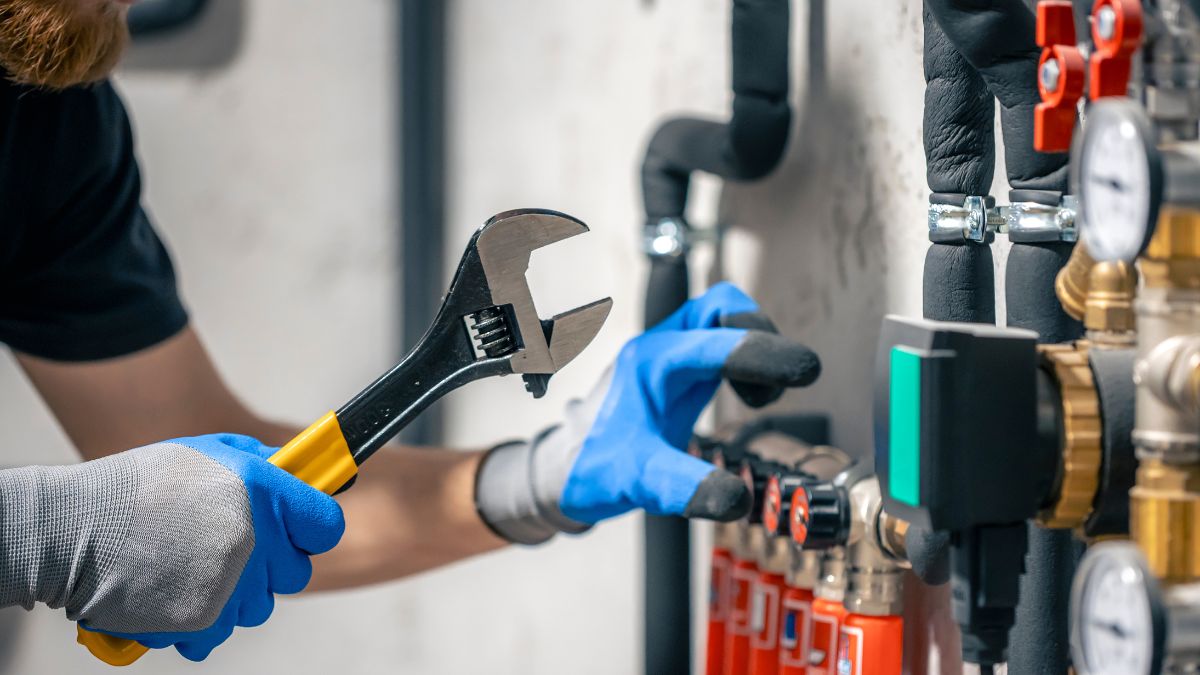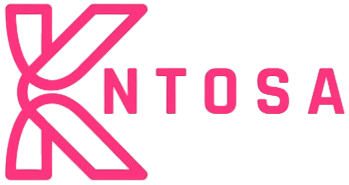TECHNOLOGY
Raiakgeart: Driving Business Growth with Sustainable Tech

Sustainability isn’t just a buzzword—it’s a necessity. Businesses today face the dual challenge of remaining competitive while integrating environmentally conscious practices into their operations. The good news? Raiakgeart is here with a game-changing solution. Combining cutting-edge technology with a focus on sustainability, Raiakgeart helps businesses grow while reducing their environmental impact.
This blog explores how Raiakgeart empowers businesses with sustainable technology to achieve growth, efficiency, and innovation. If you want to set your brand apart, minimize costs, and still focus on a greener future, read on.
What is Raiakgeart?
Raiakgeart is a forward-thinking platform offering sustainable technology solutions tailored for businesses looking to scale ethically. Their solutions focus on bridging the gap between profitability and environmental responsibility, ensuring businesses can innovate and compete without compromising on sustainability.
Whether it’s optimizing energy consumption, streamlining operations, or reducing waste through advanced software and systems, Raiakgeart delivers tools that work both for your bottom line and the planet.
Key Features of Raiakgeart
- Customizable Solutions – Each business is unique, and Raiakgeart offers customizable solutions to align with your specific needs.
- Energy Efficiency Optimization – Reduce operational costs while minimizing your carbon footprint.
- Data-Driven Insights – Use advanced analytics to make informed, sustainable decisions.
- Scalable Technology – Flexible tools that grow as your business scales.
- Eco-Friendly Components – Hardware and software designed with sustainability in mind.
Why Sustainable Technology is the Future of Business Growth
Businesses are under scrutiny from stakeholders, customers, and governments to adopt environmentally-responsible practices. Failing to adapt can result in significant reputational and financial risks. That’s where Raiakgeart proves invaluable.
1. Consumer Demand for Green Brands
Modern consumers care deeply about sustainability. According to Nielsen, 73% of global consumers are willing to adjust their buying habits to benefit the environment. By leveraging Raiakgeart’s solutions, your business aligns with market expectations, enhancing brand loyalty and trust.
2. Cost Savings Through Efficiency
One of the biggest misconceptions about sustainable technology is that it’s expensive to adopt. On the contrary, Raiakgeart’s solutions focus on optimizing energy and resource consumption. Businesses using their tools have reported up to 25% reductions in energy costs within the first year.
3. Regulatory Compliance and Incentives
Governments worldwide are enforcing stricter regulations on carbon emissions and non-sustainable business practices. Raiakgeart helps you comply with these mandates while qualifying for green tax breaks and incentives that often come with sustainable initiatives.
4. Long-Term Competitive Advantage
Sustainably built businesses enjoy a longer-term competitive edge, attracting green-leaning investors and winning contracts with eco-conscious clients. Raiakgeart makes it easy to communicate your sustainability efforts with measurable, trackable data on carbon reduction and efficiency savings.
How Raiakgeart Solves Key Business Challenges
A. Customer Support and ERP Integration
Raiakgeart’s platforms integrate seamlessly with existing Enterprise Resource Planning (ERP) systems. This allows for smooth operation transitions, better supply chain management, and optimized customer service—all while prioritizing sustainability.
Benefits for Businesses:
- Track resource use efficiently across supply chains.
- Reduce operational downtime with real-time analytics.
- Improve customer satisfaction by showcasing sustainability metrics.
B. Energy Optimization Solutions
The top business expense across industries often comes down to energy consumption. Raiakgeart offers IoT-enabled hardware integrated with AI to analyze your energy usage patterns and provide actionable recommendations.
Example:
Imagine running a production facility where energy consumption spikes unpredictably. Raiakgeart’s AI tools monitor these surges, predict future spikes, and help schedule machinery use in a cost-effective pattern—resulting in less energy wastage and reduced electricity bills.
C. Eco-Friendly Product Lifecycle Management
From sourcing raw materials to end-user delivery, Raiakgeart ensures businesses minimize waste and use sustainable practices throughout their production lifecycle.
Example:
A global apparel company reduced 20% of textile wastage after switching to Raiakgeart’s supply chain optimization tool, resulting in millions saved annually.
Join a Community Committed to Change
Raiakgeart doesn’t just offer technology—it builds a promise of community. Partnering with Raiakgeart means tapping into a global network of like-minded professionals and organizations striving for a greener, more prosperous future.
By sharing strategies, achievements, and challenges, Raiakgeart’s client ecosystem fosters innovation that others can also replicate to bring positive environmental change.
Subscriber Perks:
- Access to exclusive sustainability webinars.
- Early releases of Raiakgeart’s developments.
- Networking events with other eco-conscious businesses.
Take the First Step Toward a Greener Future
There’s never been a better opportunity to start growing your business sustainably. Raiakgeart delivers solutions tailored to your unique challenges, offering proven tools to cut costs, improve efficiency, and make sustainability effortless.
The path to sustainable business growth begins now, with Raiakgeart by your side.
TECHNOLOGY
PEBC Exam vs Australia Intern Oral Exam 2025: A Complete Comparison

Key Points to Remember
- PEBC involves staged written and clinical exams, while Australia’s oral exam is interactive and scenario-based.
- Eligibility differs; PEBC requires credentialing plus EE and QE, while Australia requires completion of internship hours and CPD.
- Costs have been structured differently, with PEBC charging per stage and Australia charging as per the oral attempt.
- Both focus on clinical knowledge, ethics, problem-solving, and communication.
- Success in either pathway requires structured preparation, confidence, and guided practice.
Introduction
If you are an aspiring international pharmacy graduate, then one of the major challenges that you have to face is following the right pathway to registration. Two most recognized and followed routes are the Intern Oral Exam in Australia (2025) and the PEBC (Pharmacy Examining Board of Canada) examinations.
Both of these have been designed in a way to ensure the pharmacists remain safe, competent, and are widely ready for independent practice. However, their eligibility criteria, formats, and focus areas tend to significantly differ.
Keep reading as we rightly breakdown the ways the PEBC and the Australia’s Internal Oral Exam.
Quick Comparison: PEBC Exam vs Australia Intern Oral Exam
| Feature | PEBC Exam (Canada) | Intern Oral Exam (Australia 2025) |
| Purpose | Certifies international graduates and ensures Canadian equivalency | Final step after internship for full pharmacist registration |
| Exam Structure | Two stages – Evaluating Exam (EE) and Qualifying Exam (QE Part I & II: Written + OSCE) | One oral exam divided into 3 parts: Primary Healthcare, Law & Ethics, Communication & Problem-Solving |
| Format | Written MCQs + OSCE clinical stations | 35–40 minute face-to-face oral exam with role plays |
| Eligibility | Credential evaluation + EE + QE | Provisional AHPRA registration, 75% internship hours, CPD, ITP enrolment |
| Skills Tested | Clinical knowledge, calculations, problem-solving, communication | Patient counselling, prescription analysis, law & ethics, real-world scenarios |
| Fees | Varies by exam stage (EE & QE each have separate fees) | Oral exam: AUD 475; appeal & law/ethics components extra |
| Outcome | PEBC certification and then licensure with provincial regulatory authority | General registration with AHPRA, and then independent pharmacist practice |
What Is the PEBC Exam?
The Pharmacy Examining Board of Canada (PEBC) is Canada’s national certification body for pharmacists and pharmacy technicians. Its role is to ensure that international graduates meet Canadian standards before they can practice.
The PEBC process involves two major steps
- Evaluating Examination (EE): Confirms whether your pharmacy degree is comparable to Canadian standards.
- Qualifying Examination (QE): Includes both a written multiple-choice test (Part I) and the Objective Structured Clinical Examination (OSCE, which is Part II).
The PEBC pathway is certainly academic, and said to be combining problem-solving, clinical knowledge, and patient communication. These exams must be passed in the first place to apply for licensure through the provincial regulatory authorities in Canada.
What Is the Australia Intern Oral Exam 2025?
The Intern Oral Exam is known to be the first step that every aspiring intern must take forward before obtaining full registration as certified pharmacists. This examination is conducted by the PBA (Pharmacy Board of Australia) under AHPRA, and this particular assessment does evaluate whether the respective interns are capable and ready for their independent practice.
Key points include:
- Eligibility: Candidates need to complete 75% of the internship hours, hold their provisional AHPRA registration, and then get enrolled in the Internship Training Program (ITP). Every other respective CPD requirement must also be met.
- Format: A 35 to 40 minute oral examination conducted face-to-face with an examiner.
- Structure:
- Primary Healthcare (role play): Managing the patient-based minor ailments.
- Legal & Professional Practice: Laws, ethics, and other kinds of professional duties.
- Problem Solving & Communication: Analysing the prescriptions and counselling patients.
Unlike the PEBC exams, this test is scenario-based and interactive, focusing on how well interns handle real-world pharmacy situations.
Common Skills Tested
Both exams, despite their differences, share similar goals. They assess:
- Clinical Knowledge & Decision-Making: from dosage calculations to patient treatment strategies.
- Communication Skills: effective patient counselling and safe pharmacist–patient interaction.
- Ethics & Law: compliance with regulations, handling forged prescriptions, and ensuring public safety.
- Problem-Solving: spotting dispensing errors and managing patient conflicts.
Preparation Approaches
For PEBC Exams
- Practice with mock MCQs and OSCE cases.
- Study Canadian pharmacy law and guidelines.
- Train under timed exam conditions.
For Australia’s Intern Oral Exam
- Role-play scenarios with peers to build confidence.
- Study the Australian Medicines Handbook and legal framework.
- Practice prescription analysis and patient counselling in real-time.
At Elite Expertise, we emphasize preparation that goes beyond textbooks. Practical training, mentorship, and simulated sessions are key to building both knowledge and confidence.
After the Exams
- PEBC: Successful candidates receive PEBC certification, allowing them to apply for licensure with their provincial regulator in Canada
- Intern Oral Exam (Australia): Passing candidates gain general registration with AHPRA, enabling them to practice independently
Both exams open pathways to respected pharmacy careers in two advanced healthcare systems.
Conclusion
The PEBC Exam in Canada and the Australia Intern Oral Exam 2025 are both designed to ensure pharmacists are competent and safe for independent practice. Although the PEBC process involves following multiple stages of clinical knowledge and academic knowledge testing, the Australian oral examination is the final and last test of practical readiness before the full registration.
At Elite Expertise, we do specialize in helping aspiring international pharmacy graduates to rightly prepare for both Australian and PEBC licensing exams. With personalized coaching, structured guidance, and practical training, you can effectively take your next step in your career, whether it is in Australia or Canada.
TECHNOLOGY
The Critical Duties of Commercial Roofing Contractors in Building Maintenance

Effective building maintenance hinges on the roof—a structure’s first line of defense against weather, debris, and environmental threats. Engaging experienced commercial roofing contractors St. Louis County, MO is pivotal to safeguarding your property, ensuring its continued value, and supporting the businesses and people within. These professionals bring industry-specific insights essential to addressing the unique needs of commercial properties, ranging from sizable retail complexes to multi-story office buildings.
Without high-quality roofing work and ongoing maintenance, commercial buildings face increased risks of structural issues, water damage, and costly interruptions. Professional commercial roofing contractors provide comprehensive assessments, precise installations, and swift repairs, enabling business owners and facility managers to focus on their core operations with confidence.
Expert Installation and Material Selection
The longevity and resilience of a commercial roof depend mainly on the right choice of materials and correct installation practices. Commercial roofing contractors are trained to evaluate a building’s design, climate exposure, and intended use before recommending materials such as TPO, EPDM, PVC, metal, or built-up roofing. Each material comes with differing strengths in durability, insulation, and weather resistance, which only a knowledgeable contractor can match to your building’s unique needs.
Proper installation is paramount to prevent pervasive issues such as leaks, weakened roof structure, or premature deterioration. Certified contractors utilize the latest tools and adhere to rigorous industry standards to ensure that every layer, membrane, and flashing is correctly fitted for maximum protection. Their attention to detail can translate into decades of reliable roof performance.
Regular Maintenance and Inspections
Preventive maintenance is at the heart of long-lasting commercial roofs. Professional contractors conduct thorough inspections, which often include the use of infrared scanning and moisture detection technology, to identify vulnerable points such as cracked seals, pooling water, or damaged membranes. As explained by This Old House, comprehensive roof inspections are crucial for identifying early signs of deterioration and ensuring the overall integrity of the roof. They also provide services such as routine cleaning, gutter management, and proactive repairs that stave off major disruptions. Consistent maintenance not only deters expensive repairs but also helps preserve indoor air quality by preventing mold growth and protecting insulation.
Repairs and Emergency Services
Despite preventive care, commercial roofs remain susceptible to sudden damage from severe storms, hail, falling debris, or accidental impacts. When emergencies strike, professional roofing contractors have the expertise and equipment to respond swiftly, mitigating further loss or safety hazards. Their prompt repair work—from sealing small leaks to replacing entire roof sections—can make the difference between minor inconvenience and significant business interruption.
Many reputable contractors also offer 24/7 emergency services, a necessity for businesses that can’t afford downtime. Their readiness and reliability provide peace of mind, knowing any unexpected roof problem will be addressed with urgency and skill.
Energy Efficiency and Environmental Considerations
Commercial roofing contractors help optimize buildings for energy efficiency by recommending and installing materials such as cool roofs, which reflect sunlight and reduce heat absorption. These energy-smart solutions not only lower heating and cooling costs but also contribute to a building’s sustainability profile. Many contractors are skilled at incorporating green technologies, such as vegetative roofs or solar panel systems, allowing property owners to take advantage of utility rebates and tax incentives.
Environmental best practices in roofing are gaining momentum.
Compliance with Building Codes and Safety Standards
Adhering to local and state building codes is non-negotiable in the commercial roofing industry. Experienced contractors are familiar with evolving regulations, including fire safety requirements, wind resistance standards, and eco-friendly mandates. By ensuring every project passes inspection and meets all ordinances, they help property owners avoid legal troubles, fines, and insurance complications. Contractors’ deep familiarity with regulatory and safety protocols, such as those provided by OSHA, underscores their vital role in protecting both workers and building occupants throughout the roofing process.
Insurance and Warranties
Reliable commercial roofing contractors provide robust insurance coverage for every job, shielding building owners from liability in the event of workplace accidents or property damage during the project. Additionally, their work is typically backed by strong warranties on both materials and labor, providing clients with added assurance that any post-installation issues will be swiftly addressed without incurring additional financial burden.
Long-Term Maintenance and Support
The partnership with a qualified commercial roofing contractor doesn’t end with installation or repair. These professionals provide recurring maintenance, scheduled inspections, and on-demand repairs—all of which protect the original investment, extend the roof’s service life, and prevent unexpected expenses. Timely professional attention ensures that small issues, such as minor leaks or localized wear, never become major setbacks.
With scheduled reports and documented service history, building owners and managers can plan for renovations, secure budgeting, and satisfy insurer requirements with confidence.
Conclusion
Commercial roofing contractors are essential partners in protecting property, promoting sustainability, and ensuring compliance with modern standards. Their expertise, responsiveness, and commitment to continuous improvement make them central to long-term building maintenance. As demand for energy-efficient, resilient infrastructure rises, relying on professionals is not just clever—it’s essential for sustainable growth and peace of mind.
TECHNOLOGY
Optimized Rack Systems for Modern IT Environments

Introduction
Modern IT infrastructure relies heavily on systems that can adapt to growing technical demands while offering robust performance and security. At the heart of this evolution are advanced rack systems, which have become much more than the physical skeleton of data centers. They are now strategic assets, underpinning reliability, efficiency, and scalability for organizations of all sizes. For IT managers and decision-makers seeking regional solutions, tailored rack systems Nashville are setting the benchmark for both enterprise and small business requirements. With the exponential rise of cloud computing, big data, and artificial intelligence, the need for innovative rack system design and implementation has never been greater. Well-optimized racks are vital for simplifying maintenance, supporting high-density deployments, and protecting critical hardware from both environmental and physical threats. To stay ahead in this fast-paced environment, IT leaders must focus on integrating rack systems that support rapid technological advancements and long-term business continuity.
Importance of Rack Systems
Professional rack systems are foundational to organizing, safeguarding, and managing mission-critical IT equipment. Well-designed racks optimize equipment layout, improve visibility and access, and enhance airflow to promote efficient cooling. The result is reduced downtime—an essential metric in environments where even minor disruptions can have ripple effects across revenue and reputation. As technology continues to grow in density and complexity, rack solutions provide the backbone for seamless IT operation and simplified asset management. Another key role of comprehensive rack solutions is in cable management and fault mitigation. Tangled, poorly organized cables are often the source of problems, ranging from accidental disconnections to prolonged troubleshooting times. A streamlined cable management system, integrated into the overall rack design, can eliminate these headaches, resulting in a cleaner, more efficient IT workspace.
Key Features of Modern Rack Systems
Industry-leading rack systems are equipped with an array of advanced features that address the challenges of today’s IT environments:
- Modular Architecture: Flexible layouts and components that facilitate sizing adjustments, future expansion, or in-place upgrades, ensuring longevity and investment protection.
- Advanced Cooling Strategies: Incorporation of airflow management tools, liquid cooling, and AI-driven climate controls to manage higher server densities while minimizing energy usage.
- Efficient Cable and Power Distribution: Features such as vertical and horizontal channels, quick-release panels, and tool-less access points facilitate systematic cable routing, reducing errors and supporting rapid device swaps.
- Integrated Security Protocols: Including but not limited to biometric access scanners, tamper-evident designs, and real-time surveillance camera integration for top-tier asset protection.
Enhancing Energy Efficiency
As the world’s digital footprint expands, so does the energy consumption of IT infrastructure. Leading rack systems directly contribute to greener operations by maximizing airflow, optimizing power usage, and supporting intelligent temperature controls. Data centers consciously deploy rack units with real-time monitoring to match cooling demand with heat output—one of the most effective approaches to energy savings and environmental sustainability.
High-efficiency racks with built-in airflow management and closed-loop cooling help reduce the workload of traditional HVAC systems. Techniques such as hot aisle/cold aisle configurations and in-rack containment have been proven to lower operational costs and improve system uptime. According to Data Center Dynamics, these kinds of strategies are increasingly becoming standard as enterprises look to meet carbon reduction goals and optimize operational budgets.
Scalability and Flexibility
Technology ecosystems are never stagnant—demand can spike overnight, and new applications may require rapid rollouts. A hallmark of modern rack design is modularity, which simplifies scaling infrastructure up or down. Whether onboarding AI-powered servers or deploying new network nodes for edge computing, modular racks allow organizations to stay competitive without requiring disruptive overhauls or large capital expenditures. Efficient rack systems thus become a leverage point for business agility in evolving digital landscapes.
Security Measures
Digital security often dominates conversations about IT protection, but physical access control is equally critical for comprehensive risk management. Today’s racks feature robust, multilayered approaches: biometric authentication for entry, anti-tamper hardware, and embedded monitoring technology that instantly notifies security teams of unauthorized activity. These advanced defenses ensure sensitive data doesn’t fall into the wrong hands and support compliance with today’s stringent privacy and cybersecurity regulations.
Future Trends in Rack Design
Rack solutions are evolving quickly, with future-ready designs focusing on automation, flexibility, and integration. Major trends include:
- Enhanced Modularity: More customization options to support continually changing IT workloads and hybrid cloud deployments.
- IoT Integration: Racks connected to central management platforms for automated, real-time health and performance monitoring.
- Sustainable Materials and Methods: Use of recyclable materials and greener manufacturing processes to meet regulatory and societal pressures.
- Edge Computing Support: Compact, ruggedized racks designed for deployment in remote, space-constrained, or non-traditional environments.
By focusing on these trends, organizations can build a resilient IT backbone that’s capable of meeting today’s needs and tomorrow’s technological breakthroughs. In summary, the evolution of rack systems is reshaping how organizations plan, operate, and secure their IT environments. Prioritizing features such as modular design, energy efficiency, and advanced security isn’t just smart—it’s essential in a climate where technological agility defines competitive edge. Explore how rack systems can advance your organization’s infrastructure goals and lay the groundwork for sustained growth and innovation.
-

 BLOG1 year ago
BLOG1 year agoElizabeth Huberdeau: Women Behind The WWE Superstar
-

 NEWS1 year ago
NEWS1 year agoMisty_moless_2: A Rising Star in the Digital World
-

 GAMES1 year ago
GAMES1 year agoWest vs East Match Player Stats
-

 BLOG1 year ago
BLOG1 year agoite:mommyandlove.com/baby-names/: Discover Unique and Meaningful Baby Names
-

 BLOG1 year ago
BLOG1 year ago3d659.com blog: A Resourceful Hub for Information
-

 EDUCATION12 months ago
EDUCATION12 months ago7 Top Arts Educational Schools in London Every Student Should Know About
-

 BLOG1 year ago
BLOG1 year agoP72 National Pitch Competition: Nurturing the Entrepreneurs of Tomorrow
-

 TECHNOLOGY1 year ago
TECHNOLOGY1 year agoNpoint S/N 135064: Understanding Its Significance & Applications
